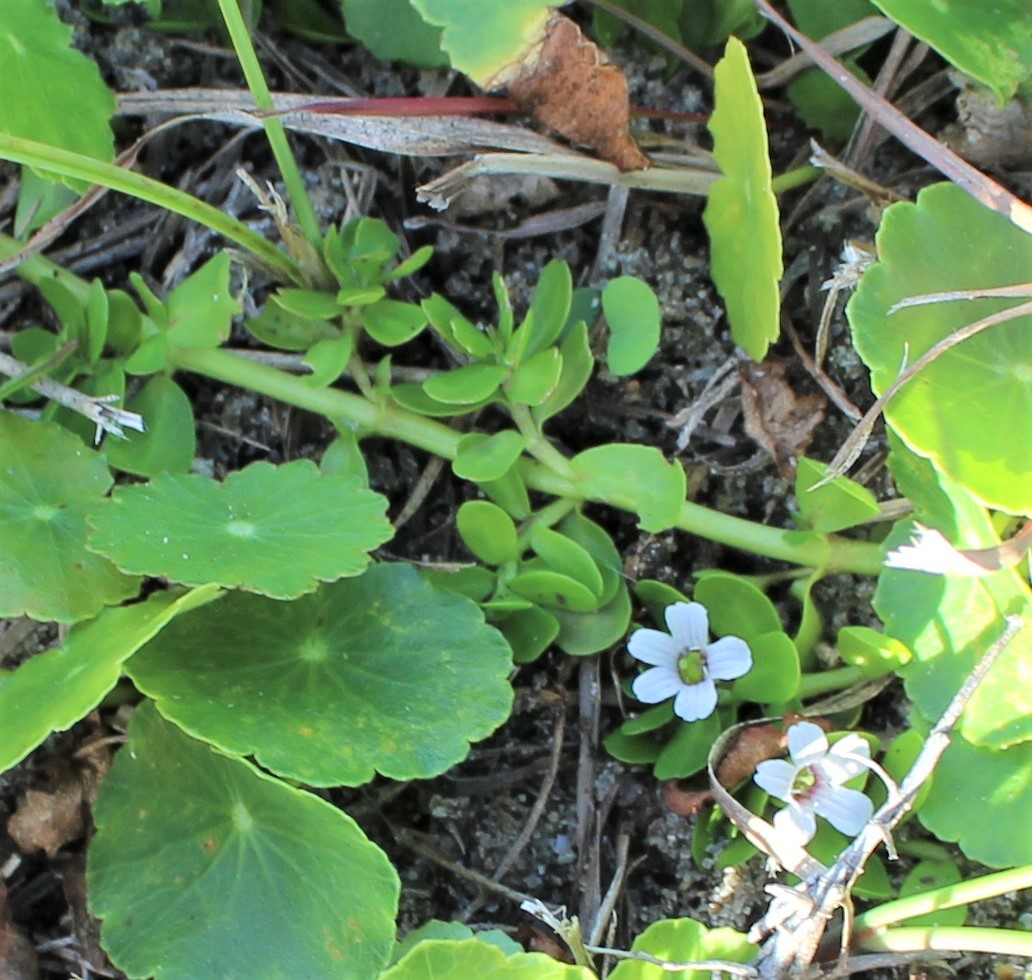NC Native Plant Society:
Plant Details
Bacopa monnieri
Monier's Water-hyssop, Coastal Water-hyssop, Herb-of-grace
Scientific Name: |
Bacopa monnieri |
|---|---|
Genus: |
Bacopa |
Species Epithet: |
monnieri |
Common Name: |
Monier's Water-hyssop, Coastal Water-hyssop, Herb-of-grace |
Plant Type |
Herb/Wildflower |
Life Cycle |
Perennial |
Plant Family |
Plantaginaceae (Plantain Family) |
Native/Alien: |
NC Native |
Invasive Status: |
(*Key) |
Size: |
0-1 ft. |
Bloom Color(s): |
White, Blue |
Light: |
Sun - 6 or more hours of sun per day |
Soil Moisture: |
Wet |
Bloom Time: |
April, May, June, July, August, September, October |
Growing Area: |
Coastal Plain |
Habitat Description: |
Freshwater tidal marshes, muddy shores, streams and pools. Uncommon in NC coastal plain. |
Leaf Arrangement: |
Opposite |
Leaf Retention: |
Deciduous |
Leaf Type: |
Leaves veined, not needle-like or scale-like |
Leaf Form: |
Simple |
Life Cycle: |
Perennial |
Wildlife Value: |
Has some wildlife value |
Landscape Value: |
Not Recommended for home landscapes |
State Rank: |
S3: Vulnerable (*Key) |
Global Rank: |
G_?: Uncertain (add status to NOTES section) (*Key) |
Notes: |
Can form large mats. The stems and leaves are NOT fragrant when crushed (unlike Bacopa carolinina, which has a lemon odor). Used in aquaria and hanging baskets. |
|
fall flowering New Hanover County
Lara Berkley |
|
Links: |
Vascular Plants of NC: https://auth1.dpr.ncparks.gov/flora/species_account.php Lady Bird Johnson Wildflower Center: https://www.wildflower.org/gallery/species.php?id_plant=BAMO 700 Bird-friendly Plants for NC: https://nc.audubon.org/700 |
back to top
go to plant details search
go to plant images search
go to gallery home
back to Initial b Gallery
back to orchids
back to Carnivorous Plants
back to Trilliums




